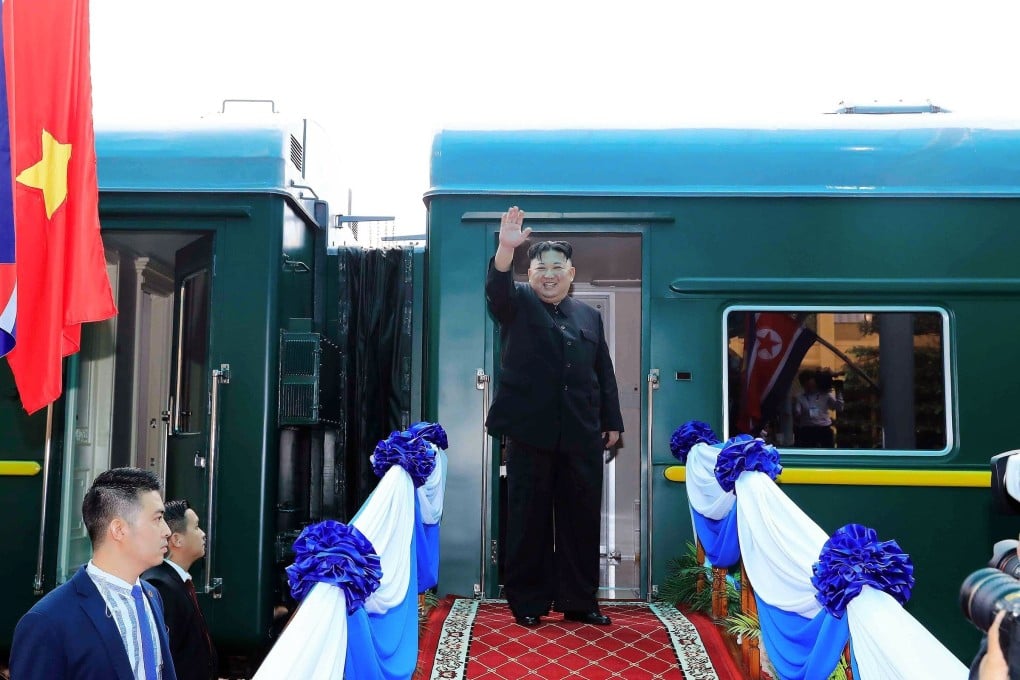Opinion | The Trump-Kim summit failed, but Kim Jong-un’s China train trek taught us the truth about Beijing’s role
- When Kim, surrounded by lavish praise and rapt attention, took care to avoid dropping cigarette ash or a match on his host’s land, it was a reminder that China’s place atop the hierarchy of communist East Asia is as strong as ever

The US-North Korea summit in Hanoi produced little more than photo ops, but much can be learned from the logistics of the affair. What looked at first glance like material for comedians – Kim Jong-un’s 60-hour journey to Vietnam by train – may be one of the summit’s inadvertent points of success. Not for US President Donald Trump or the North Korean leader, but for China.
Beijing’s transport support to Kim went beyond the technical to the symbolic; as this train chugged across a country vast in territory, rich in history and bulging with economic resources, Kim had only to look out of the window to realise China remains a viable alternative to the US when it comes to brokering political survival. Beijing, in return, received ritual respect, firming up the sense of North Korea as a tributary state while making clear to the US that the hermit kingdom can’t be dealt with without China.
The 35-year old Kim’s armoured train ride had historical echoes, including to his grandfather Kim Il-sung, who traversed China in 1958 to meet Ho Chi Minh in Hanoi. It also invited comparisons to his father, Kim Jong-il, whose fear of flying was so great he went almost everywhere by rail, replete with high-end dining, lobster tanks, a fine wine collection and entertainers known as “lady conductors”. Trains have long been a comfort zone for the Kim family when criss-crossing their own impoverished country, with some 20 private stations and hundreds of luxury carriages to choose from. When Kim Jong-il died in December 2011, it was said to have been on a special train.
The media blackout imposed on the train as it barrelled across China was a trainspotter’s delight. Amateur sleuths and professional cameramen competed to spot the high-security entourage during its slog across China. From the snowy northern border at Dandong to the palm-fringed southern border at Dong Dang, several sightings stand out.
There was the expected crossing of the Yalu River Bridge, the passage though Jinzhou, then the unexpected passage via Tianjin instead of Beijing. There is low-light video footage of the train’s passage in Yongzhou, Hunan followed by a night shot taken in Guilin in Guangxi province. Social media buzzed (until censored) with complaints about road closures in Zhengzhou and Changsha. The passage through the hub city of Wuhan is said to have seriously interrupted morning rush-hour traffic.

